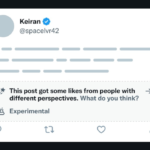A 2012 research study conducted by Facebook utilized its users as unknowing participants in a week-long examination of social media’s influence on emotions. The hypothesis was whether users’ feelings could be swayed by the emotional tone of the content seen in their News Feed, as manifested by the sentiments in their subsequent posts on the platform.
The study involved 700,000 Facebook users who were either exposed to predominantly positive posts or predominantly negative posts on their News Feed. The study concluded that users who saw more positive content usually posted content with a similar positive sentiment, and vice versa for users who were shown more negative content.
While these results may not be unexpected, their ethical ramifications have kindled controversy. It is essential to remember that the impact of the experiment was not only on the users directly manipulated but also on their friends. Roughly 155,000 users from both the positive and negative groups made at least one status update during the experiment. Thus, numerous status updates in an experiment potentially influenced by a deliberate mood manipulation were seen by other users.
Although we lack concrete evidence that the experiment caused widespread emotional upset beyond the week of the study, the question of ethics remains. Employing unsuspecting users in emotional manipulation tests blurs the line between curiosity and potential damage.
Each Facebook user has an implicit agreement with the platform, wherein they consent to use the service, and Facebook tailors advertisements using the data the user shares. This interaction presumes ethical behavior on Facebook’s part, never exploiting user data, or breaching trust. In this instance, allegations suggest that Facebook violated these terms by using the users’ social graphs to potentially cause emotional discomfort.
Manipulation is commonplace in corporate businesses; advertising is a prime example. Although this practice is ubiquitous, revelations of Facebook’s experiment underpin the necessity to define boundaries. Facebook authorizing such a study raises questions about potential future studies and experiments of a similar nature.
To be clear, Facebook is not obligated to regulate the emotional tone of the content in its News Feed. Our lives encapsulate experiences of joy and grief, which now, more than ever, are shared on digital platforms. However, purposefully influencing users’ emotional states for mere experimental curiosity, absent of user consent and ethical precautions, is irresponsible.
According to Facebook’s Adam Kramer, a co-author of the study, their intent was not to distress or exploit users but to scrutinize the emotional repercussions of Facebook on its user-base. Looking back, Kramer conceded that the questionable benefits accrued from the study may not have justified the potential worry it caused. He also confirmed that Facebook has since strengthened its internal review procedures in light of this experiment.
Minor enhancements were applied in 2025 for readability.
Discover more from TechBooky
Subscribe to get the latest posts sent to your email.







